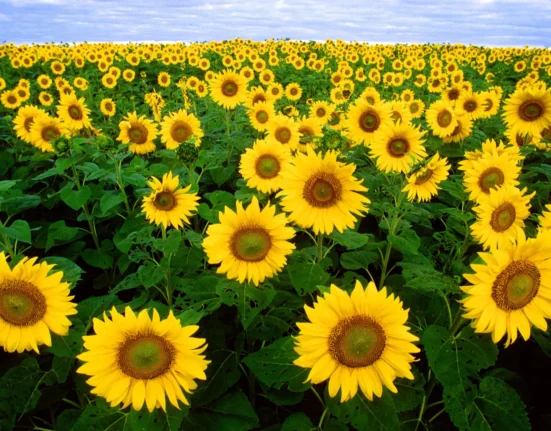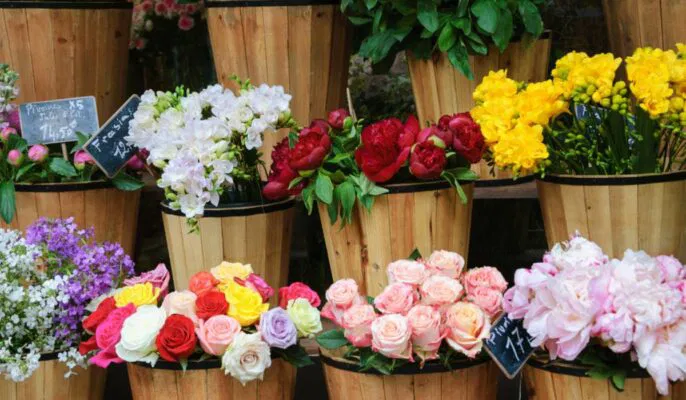On a sunny April morning, Sophia stood in the middle of a bustling flower market in Amsterdam. Her sister’s birthday was approaching, and Sophia wanted to find the perfect gift—something meaningful and unique. As she wandered through rows of colorful blooms, she was drawn to a cluster of delicate daisies. A florist noticed her interest and smiled, “You have a good eye. Daisies are the birth flower for April. They symbolize purity and innocence—perfect for your sister!” Intrigued, Sophia began to wonder: What stories do these flowers tell? And what secrets might her birth flower hold?
The Meaning and Significance of Birth Flowers
Birth flowers, much like birthstones, are associated with each month of the year. Each flower’s symbolism is unique, drawing from a rich tapestry of folklore, tradition, and botanical history. The practice of associating flowers with specific months dates back centuries, influenced by different cultures and interpretations over time. Understanding your birth flower can offer a deeper appreciation for the natural world and the meanings we ascribe to it.
January: Carnation and Snowdrop
- Carnation (Dianthus caryophyllus): The carnation, particularly in white, pink, and red hues, symbolizes love, fascination, and distinction. With its ruffled petals and sweet fragrance, the carnation is often associated with maternal love and admiration. In ancient Rome, carnations were used in ceremonial crowns, and today, they remain popular in floral arrangements worldwide. According to FloraQueen, carnations are among the top five best-selling flowers globally.
- Snowdrop (Galanthus nivalis): The snowdrop, a delicate white flower that often emerges through the snow in late winter, symbolizes hope and renewal. In the Victorian language of flowers, snowdrops were given to convey a message of consolation. Statistics from the Royal Horticultural Society (RHS) show that snowdrops are some of the earliest flowers to bloom in Europe, often appearing as early as January, signaling the end of winter and the approach of spring.
February: Violet and Primrose
- Violet (Viola): Violets are known for their rich purple color and heart-shaped leaves. They symbolize faithfulness, humility, and spiritual wisdom. Historically, violets have been used in medicinal remedies and were highly regarded in ancient Greek and Roman cultures for their scent and therapeutic properties. A study published in the Journal of Ethnopharmacology highlights the use of violet in traditional herbal medicine for respiratory ailments.
- Primrose (Primula vulgaris): Primroses are among the first flowers to bloom in spring, symbolizing youth, renewal, and optimism. In Celtic traditions, primroses were believed to protect against evil spirits and were often planted near doorways. Today, primroses are popular garden plants across Europe and North America, with over 500 species and numerous hybrids. According to Kew Gardens, primroses are vital for pollinators like bees, especially in early spring when few other flowers bloom.
March: Daffodil
- Daffodil (Narcissus): Bright and cheerful, daffodils symbolize new beginnings, hope, and friendship. Their vibrant yellow color is often associated with joy and positivity. Daffodils are native to Europe and North Africa and have been cultivated for centuries. In many cultures, especially in Wales, daffodils are worn on St. David’s Day as a national symbol. Statistics from the International Daffodil Registrar indicate over 13,000 registered daffodil cultivars worldwide, showcasing the flower’s diversity and popularity.
April: Daisy and Sweet Pea
- Daisy (Bellis perennis): Representing purity, innocence, and loyal love, the daisy is a simple yet charming flower that has been cherished in cultures around the world. The name “daisy” is derived from the Old English “daes eage,” meaning “day’s eye,” referring to how the flower opens in the morning and closes at night. Research from the British Wildflower Society suggests that daisies are incredibly resilient and can thrive in various environments, from wild meadows to urban gardens.
- Sweet Pea (Lathyrus odoratus): Known for their delicate fragrance and pastel-colored blooms, sweet peas symbolize blissful pleasure and goodbyes. They were first cultivated in Sicily in the 17th century and have since become popular in gardens for their scent and climbing habit. According to the American Sweet Pea Society, there are more than 1,000 varieties of sweet peas, making them a favorite among gardeners and florists.
May: Lily of the Valley and Hawthorn
- Lily of the Valley (Convallaria majalis): Often associated with humility, sweetness, and a return to happiness, the lily of the valley is a beloved flower in many cultures. It’s also known as a “May lily” because it typically blooms in May. This flower prominently features royal weddings, including those of Queen Victoria and Kate Middleton, Duchess of Cambridge. The Floral Research Journal notes that the lily of the valley is one of the most popular wedding flowers in Europe due to its delicate appearance and strong, sweet fragrance.
- Hawthorn (Crataegus monogyna): Hawthorn flowers, which bloom in late spring, symbolize hope and supreme happiness. Traditionally, hawthorn was thought to protect against evil spirits and was often used in May Day celebrations. Today, hawthorn is recognized for its medicinal properties, particularly in supporting heart health. A study published in the American Journal of Medicine found that hawthorn extract can help reduce blood pressure and improve cardiac function.
June: Rose and Honeysuckle
- Rose (Rosa): The rose represents love and passion with its timeless beauty and fragrance. Roses are the most famous flowers in the world, with a long history of cultivation and symbolism in different cultures. According to the World Federation of Rose Societies, there are over 30,000 roses in color, size, and fragrance. The rose industry is a significant economic sector, with countries like Ecuador and Kenya as major exporters.
- Honeysuckle (Lonicera): Symbolizing devoted love and the bonds of love, honeysuckle flowers are known for their sweet scent and nectar, attracting bees and hummingbirds. Honeysuckle has a rich history in traditional medicine, particularly Chinese and European herbal practices. The Journal of Traditional and Complementary Medicine notes that honeysuckle extracts have been used to treat inflammation and infections.
The Modern Significance of Birth Flowers
In today’s world, birth flowers remain a popular way to celebrate birthdays, anniversaries, and other special occasions. Florists around the globe cater to this tradition by offering special arrangements and bouquets featuring monthly birth flowers. According to a report by Floral Trends Research, the sale of birth flower bouquets has increased by 15% over the past five years, reflecting a growing interest in personalized and meaningful gifts.
Birth flowers also influence various social media trends. Users share photos and stories about their birth flowers, often using hashtags like #MyBirthFlower. This trend is particularly popular among millennials and Gen Z, who value authenticity and personal connections in their social interactions.
Conclusion: A Flower for Every Story
As Sophia discovered that day in the flower market, birth flowers are more than just pretty blooms; they are storytellers, each carrying unique meanings and histories. Whether it’s the innocence of a daisy, the devotion of a rose, or the hope signified by a snowdrop, birth flowers offer a timeless way to connect with nature and celebrate the stories of our lives. So, the next time you’re looking for the perfect gift or a way to honor a special day, consider the secret language of birth flowers—a beautiful tradition that continues to blossom.














